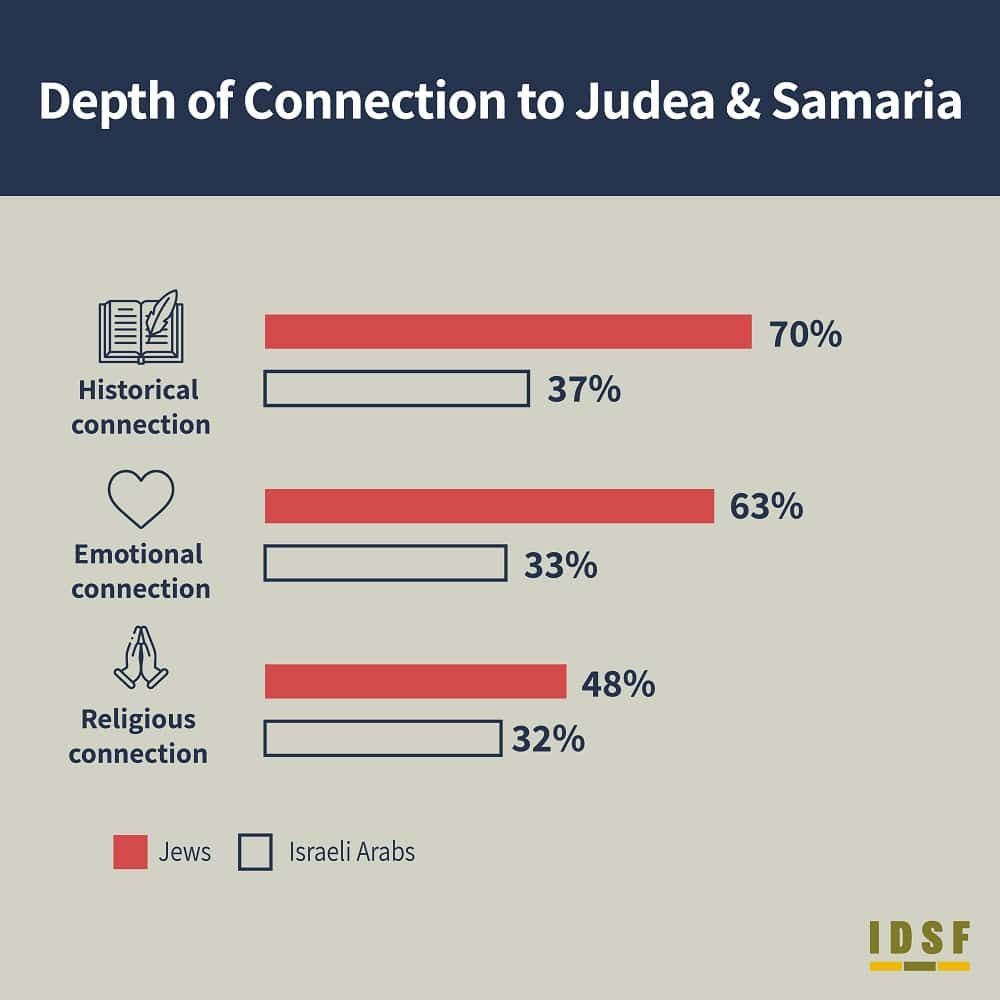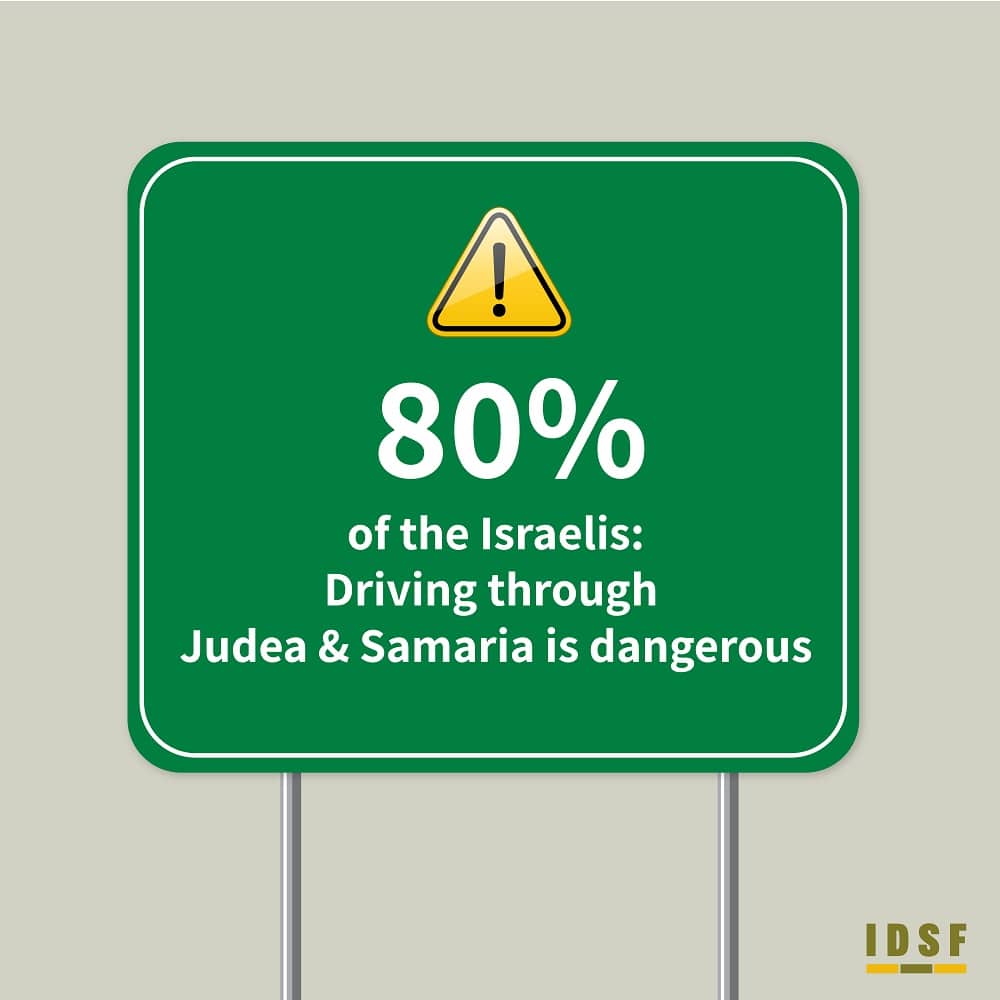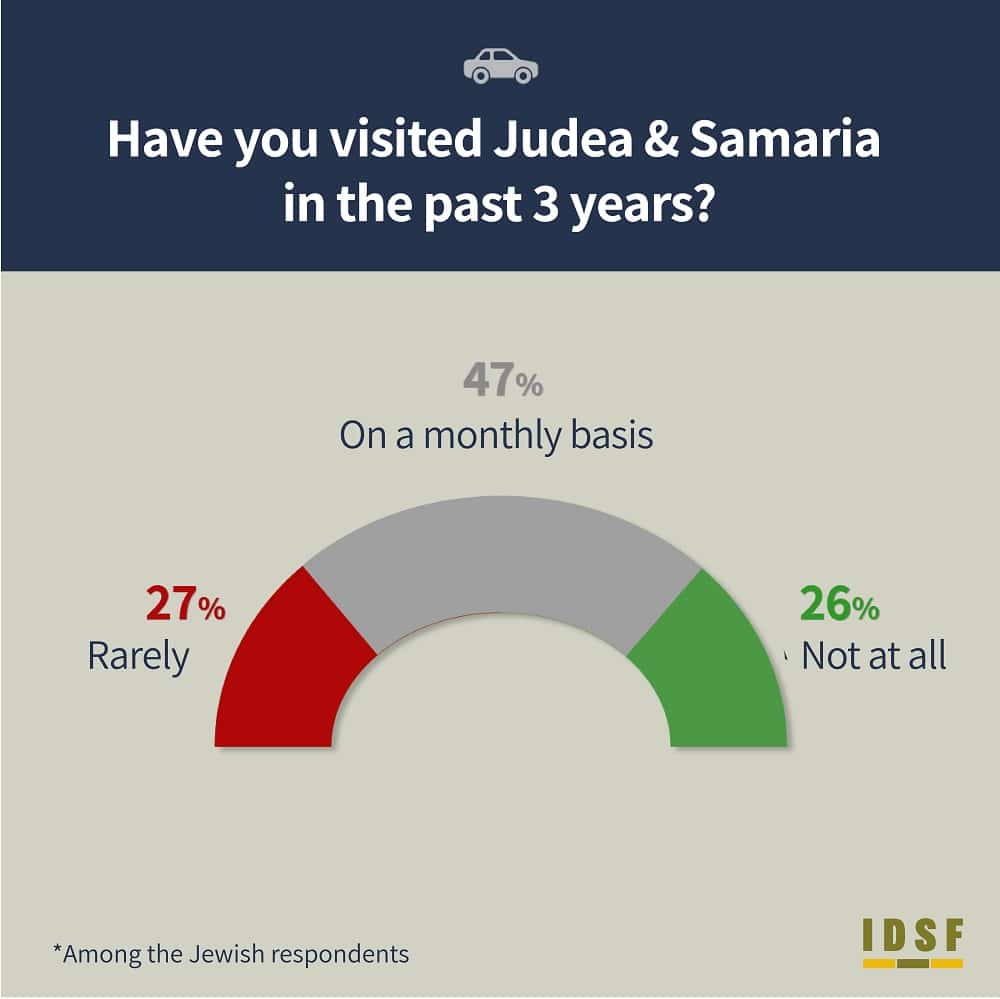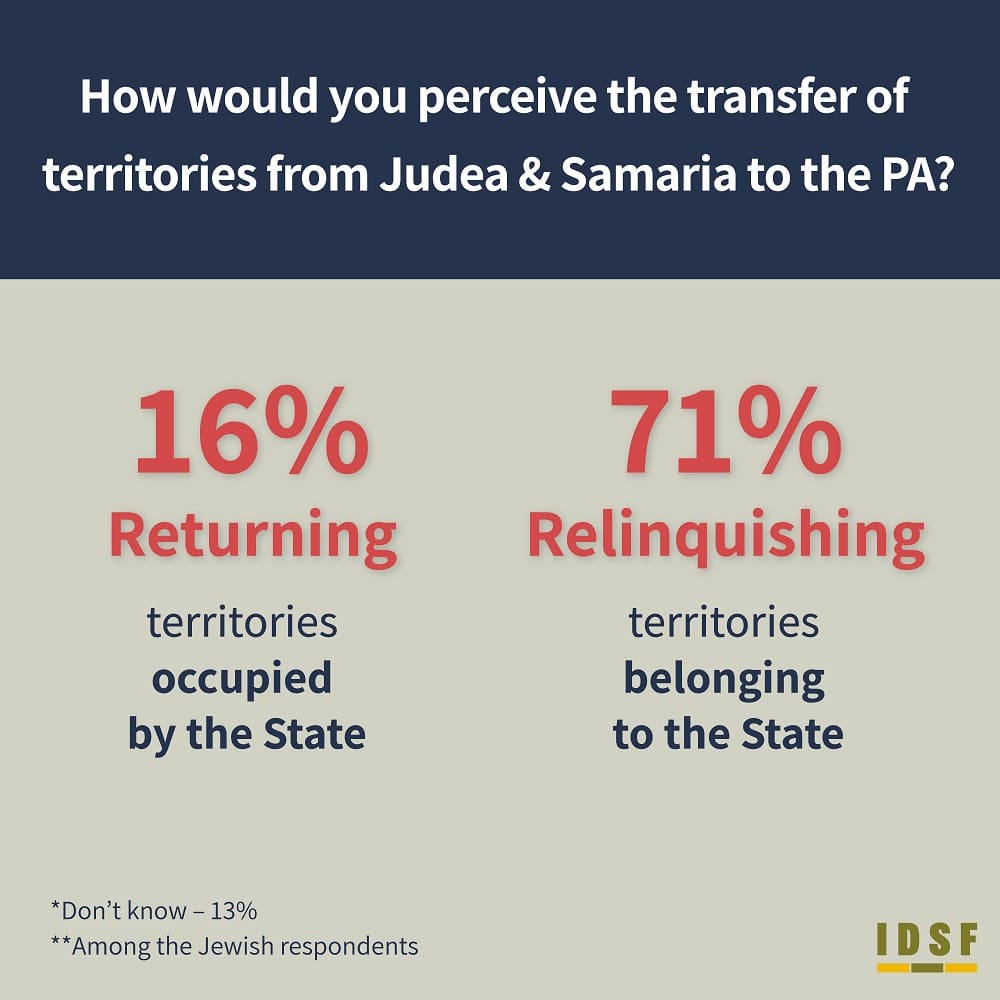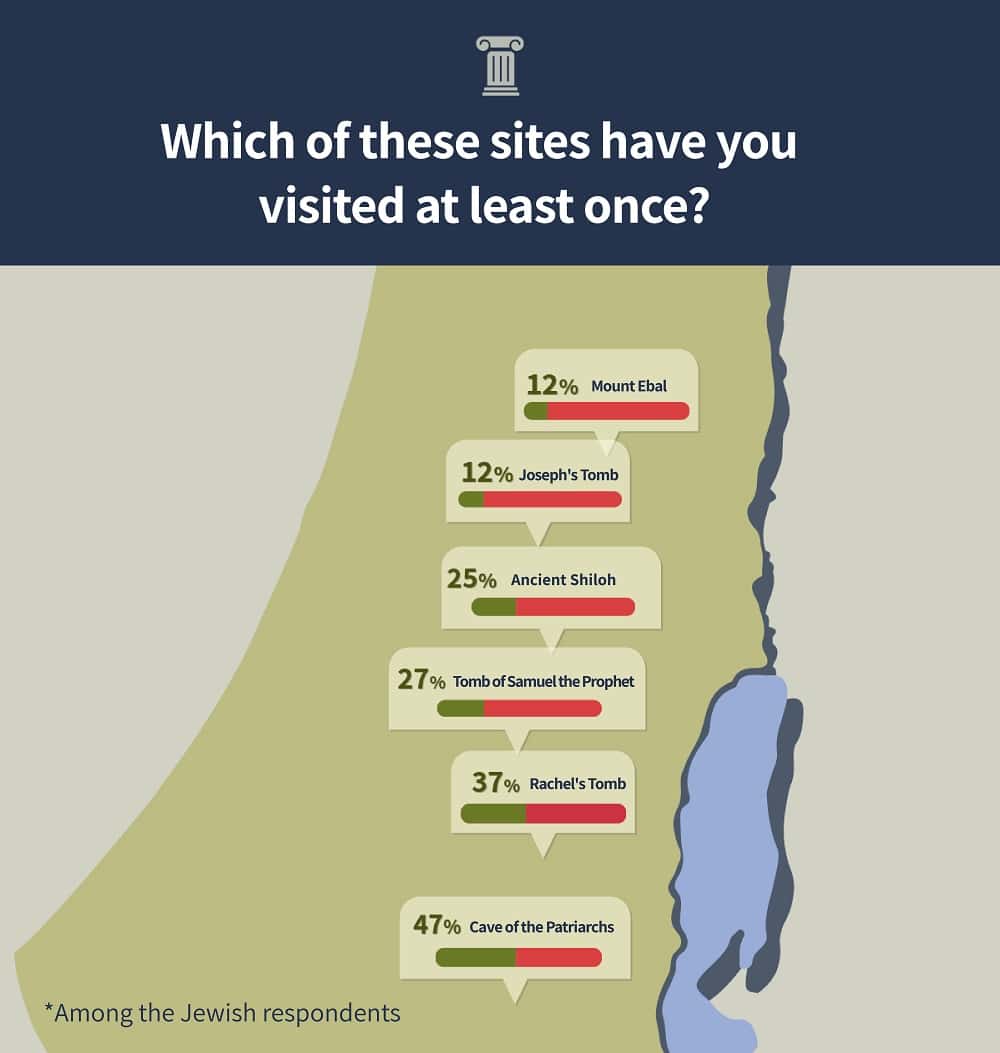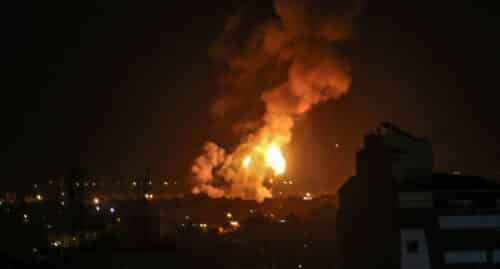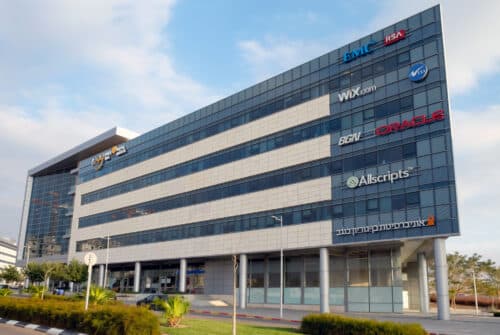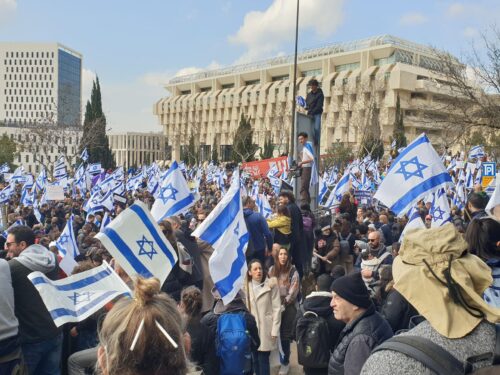Judea and Samaria appear on the public agenda within very specific contexts – namely terrorism, military activity in the region or diplomatic agreements. However, Judea and Samaria are tied deeply with the history of the Jewish people and beyond that, they signify an economic, logistic and social importance to the State of Israel. For this reason, we chose to dedicate the present survey to the status of Judea and Samaria in a broad context, in the perception of the Israeli public.
The survey was conducted by the IDSF research department and with professional statistics guidance from Dr. Haggai Elkayam. The survey was conducted among 1,191 Jewish and Arab respondents from the adult age group (ages 18+) in Israel who use the internet. For the combined sample (of all 1,191 respondents), the maximum margin of error is ±2.84% with a 95% probability; The Jewish respondent segmentation (including 956 respondents) has a maximum margin of error of ±3.17% with a probability of 95%; The Arab respondent segmentation (of 235 respondents) has a maximum margin of error of ±6.39% with a probability of 95%.
Connected: Affinity, Ties, and Differences
The findings of the survey are presented here in two parts: the first part, which you are reading now, focuses on the various aspects of the Israel public’s connection to Judea and Samaria, excluding perceptions on matters of security in the region. The second part focuses on political and security perceptions of Judea and Samaria.
The first topic we reviewed was the intensity of the connection Israel’s public has to Judea and Samaria. Often, the Judea and Samaria region is seen as connected to the religious sector, therefore we specified three forms of connection: historical, emotional and religious.
The results show that 70% of the Jewish population feels an historical connection to Judea and Samaria; 63% feels an emotional connection to the region and 48% have a religious connection with it. The overall significance of these results is that an overwhelming majority of the Israelis have a profound connection to Judea and Samaria – at least on an historical level.
Among the Israeli Arabs asked about their connection to the “West Bank” (as they refer to Judea and Samaria) – only 37% feel an historical connection to the region; 33% said they felt an emotional connection to it, and 32% feel a religious connection to Judea and Samaria. In other words: the study shows a much stronger connection to Judea and Samaria among the Jewish public as compared with the Arab public, religiously, emotionally, and in particular – historically.
A less intense connection to Judea and Samaria also characterizes Jews who identified themselves as left-wing politically: only 27% of the respondents from the left feel connected, at least historically, to the region, which is indisputably the cradle of the history and culture of the Jewish people. This is compared with 90% of those identified with the right, who feel historically connected to Judea and Samaria, and with 46% of the respondents affiliated with the political center.
In terms of the intensity of the connection to Judea and Samaria and the perceived right over the area, disparities were evident between the right and the left: 89% of the respondents affiliated with the right felt that the connection of the Jewish people to Judea and Samaria is the foundation for its right to the entirety of Israel, while only 10% of the left agreed with this view.
IDSF sees a fundamental danger in the lack of connection in parts of the Israeli public to the places that are the cradle of the Jewish culture, and in their lack of knowledge regarding the area’s crucial significance and role in establishing the justness of the Jewish people’s path. For this reason, IDSF invests considerable efforts in the cultivation of knowledge in Israel’s Jewish public, by means of educational activities in pre-military preparatory programs, high schools and more.
Visiting Judea and Samaria: Ideological and Religious Influence
Beyond feelings, connections and opinions, we sought to determine how Israelis actually view Judea and Samaria and whether the region is a part of the daily life of the Israeli public. First, we wished to discern how often the Israeli public actually visits Judea and Samaria, and for what purposes.
According to the survey’s findings, 9% of the Israeli public had frequented Judea and Samaria on a weekly basis in the past three years; 17% visited the area on a monthly basis; 41% rarely visited it, and 20% say they have not visited Judea and Samaria at all in the past three years (13% of Israel’s Jewish public lives in Judea and Samaria).
According to another of the survey’s question, 80% of the Israeli public feels that driving through Judea and Samaria is more dangerous as compared to other areas of Israel. This figure raises the question of whether the public would visit Judea and Samaria more frequently were the travel to the area not perceived as dangerous.
A segmentation by ideology of the group of respondents who have not visited Judea and Samaria at all in the past three years reveals a marked difference: whereas only 18% of the respondents who identified with the right have not visited Judea and Samaria in the past three years, 43% of the left-wing respondents have not visited the area in said period.
An interesting picture emerges when segmenting family visits to Judea and Samaria by ideological affiliation: 48% of right-wing Jews frequent Judea and Samaria for the purpose of family visits, compared to only 20% of left-wing Jews. In other words, the family circle largely determines whether one visits Judea and Samaria. As we shall see later in this survey, this has an impact on the perception of Judea and Samaria.
Family & Economics: Visits to Judea and Samaria and National Differences
In the next stage of the survey, we sought to determine whether there are differences between Israeli Jews and Arabs in term of the frequency of visits to Judea and Samaria, and the reasons for Jews and Arabs to visit the region.
The data shows that among the Jewish public that does not live in Judea and Samaria, 9% visit the region on a weekly basis; 17% visit on a monthly basis (in total, at least 26% visit the region on a monthly basis); 47% rarely come to the area, and 27% have not visited Judea and Samaria at all (15% indicated that they live there).
What are the reasons for visiting Judea and Samaria? The most common answer for visiting Judea and Samaria was mainly family visits (42%), followed by visits to heritage sites (36%), field trips (31%), work and business (28%), military and security service (27%), and finally extreme sports (6%).
Among Israeli Arabs, 13% visit Judea and Samaria on a weekly basis; 25% visit on a monthly basis; 49% rarely visit and 10% have never visited Judea and Samaria (3% of Israeli Arabs live there). Compared with the findings relating to the Jewish public, the purpose of visits by Israeli Arabs to Judea and Samaria follows a different set of priorities. First and foremost, Israeli Arabs visit Judea and Samaria for work and business purposes (63%); followed only by family visits (29%). Other purposes, such as travel or extreme sports, appeared at a very low percentage.
One insight from these findings may be that while the connection of Israeli Arabs to Judea and Samaria is first and foremost economic, the connection of Israeli Jews to Judea and Samaria is based on family and social ties. One way or another, the findings as a whole clearly present an inseparable fabric of life that exists between the Israeli public and Judea and Samaria: family, social and economic.
Order of the Day: Heritage Sites in Judea and Samaria
When the Jewish public was asked which of the two following statements would best describe a peace agreement that includes the transfer of Judea and Samaria to the Palestinian Authority –either relinquishing territories that by right belong to Israel or returning territories Israel had occupied – significant differences were found between those who visited Judea and Samaria and those who did not.
Out of those who have visited Judea and Samaria – 71% viewed such an arrangement as the relinquishing of territories belonging to Israel, while 16% viewed it as the returning of territories. Out of the respondents who have never visited Judea and Samaria – only 54% thought that such an arraignment means relinquishing territories, whereas 27% deemed it the returning of territories. Even among respondents who replied they did not know, there is a clear disparity: Among those who visited Judea and Samaria, 13% said they did not know, compared to 19% among those who did not visit the region. One way or another, the data shows that visits to Judea and Samaria have a significant impact on the public’s attitude toward the region.
Next, we inquired which heritage sites in Judea and Samaria Israeli Jews visited most. The data shows that 47% visited the Cave of the Patriarchs; 37% visited Rachel’s Tomb; 27% visited the Tomb of Samuel the Prophet (Nabi Samuel); 25% visited ancient Shiloh; 12% visited Joseph’s Tomb and 12% visited the altar of Mount Ebal.
An ideological segmentation reveals significant differences between respondents from the right and left: 46% of respondents identified with the right compared to 25% identified with the left have visited Rachel’s Tomb; The tomb of the prophet Samuel (Nabi Samuel) was visited by 33% of those identified with the right compared to 18% of those identified with the left; Ancient Shiloh was visited by 31% of the right compared to 10% of the left; Joseph’s Tomb was visited by 15% of the right and only 6% of the left; The altar of Mount Ebal was visited by 14% of the right and 8% of the left.
The data paints a rather bleak picture of the status of Judea and Samaria heritage sites among the Jewish public. Some of these heritage sites are of paramount importance in the history of the Jewish people, and are anchors of archaeological evidence for the history of the Jewish people.
In addition, the data clearly indicates a direct correlation between visiting Judea and Samaria and the perception of the region. In other words: the public that reported visiting Judea and Samaria felt a stronger connection to the region.
BDS and the likes: To What Extent Do Boycott Organizations Affect the Israeli Consumer?
Part of the fabric of life that exists between the Israeli public and Judea and Samaria has economic manifestations as well: the Israeli consumer consumes many products made in factories located in Judea and Samaria. Many organizations, led by BDS, call to boycott products manufactured in Judea and Samaria. The next part of the survey dealt with the purchasing habits of the Israeli public with regard to products from manufacturers in Judea and Samaria. In other words, it sets out to examine whether the boycott called by anti-Israeli organizations affect the reality on the ground.
The simple answer is no: only 4% of the Jewish respondents and 19% of the Israeli Arab respondents boycott products manufactured in Judea and Samaria. As oppose to these, 71% of Jews have no problem purchasing products manufactured in Judea and Samaria, and more than half of them (37%) not only do not perceive this as a problem, but even prefer to buy Judea and Samaria products to begin with. 5% are willing to buy products from Judea and Samaria, but opt for alternatives when available, and as mentioned, only 4% completely boycott such products (20% of the respondents said that they are indifferent to the place of production and do not check where the products are manufactured).
A segmentation of the findings by ideology shows that political affiliation is a strong predictor of a respondent’s willingness to purchase Judea and Samaria-made products: 41% of the respondents affiliated with the left as oppose to 1% of the respondents affiliated with the right, will either try not purchase, or completely avoid purchasing, products made in Judea and Samaria.
Among Israeli Arabs, 53% have no issue with purchasing products manufactured in Judea and Samaria (of which 21% even prefer to buy such products); 13% are willing to buy these products but will refrain from doing so when there are alternatives, and as mentioned – 19% will fully boycott products manufactured in Judea and Samaria (15% are indifferent and do not check where products are manufactured).
It was interesting to find that while 41% of the Jews affiliated with the left try not to buy – of fully boycott – products made in Judea and Samaria, only 32% of the Israeli Arabs do so.
Willingness to Live in Judea and Samaria: Not At All Costs
Judea and Samaria constitute approximately 25% of Israel’s total area. This figure begs the question whether the Israeli public views the region as a possible solution to the country’s housing crisis. The survey found that 66% of the Israeli public thinks that the land reserves in Judea and Samaria can be a plausible solution to the crisis. A segmentation by ideology shows that 90% of the respondents affiliated with the right, and 38% of the respondents from the political center view the land reserves in the region as a plausible solution to the housing crisis, as oppose to only 8% of the left-wing respondents.
In the next part of the survey, we asked whether the Israeli public would consider living in Judea and Samaria if it were economically worthwhile. 47% of the Jewish public would positively consider moving to the region, with 8% conditioning doing so only if they could move to towns located on the Israeli side of the separation fence, and 12% conditioned living in the region on moving only to large towns or cities. (43% would not consider moving there at all and 10% currently reside in the region).
Among Israeli Arabs, 73% would not consider moving to Judea and Samaria at all. Among the 24% who would consider living there, only 11% would consider moving without prior conditions; 7% would move only to cities or large towns in the region, and 6% would consider moving to the region only to communities located on the Israeli side of the separation fence (2% currently live there).
One possible explanation for the unwillingness of parts of the Israeli public to consider living in Judea and Samaria is the political status of Judea and Samaria. For this reason we asked the respondents who said they would not consider living in Judea and Samaria if they would change their minds if the State of Israel applied Israeli law and sovereignty over Area C in Judea and Samaria. Indeed, about a third of them replied that they might change their minds or at least reconsider (29%).
Interim Summary: Judea and Samaria – the Heart of the State
“The survey clearly indicates two key findings: First, indeed, most of the Israeli public today has a special and deep connection to Judea and Samaria. Second, today it is impossible to separate the Israeli public from Judea and Samaria, because there is a deep intricate connection between them, economically, geographically and socially. This is true for both the Jewish public and the Israeli Arab public. In addition, the survey shows that a clear majority of the Jewish public sees Judea and Samaria as a possible solution to the housing crisis, with a high degree of willingness to move there. All this before even addressing the natural resources and strategic advantages of this region,” IDSF founder and chairman Brig. Gen. (res.) Amir Avivi concludes the first part of the survey analysis.
“Sadly, the survey also shows a sad state of visits by the Israeli public to the most important heritage sites for the Jewish people: only 12% of the public had ever visited Mount Ebal, perhaps the most important archaeological site for the Jewish people. The survey indicates that one of the reasons for this is the lack of visits by parts of the Israeli public to Judea and Samaria: if there are no family or friends to visit there, they are not exposed to this beautiful region, and there is no desire to go on trips and visit heritage sites, and this directly affects the most basic connection of a people to its land – the historical and national connection to a region that is deeply rooted in the history of our people. IDSF movement understands the importance of this connection to Israel’s national security strategy, and therefore operates in pre-military preparatory programs, in the education system and in field trips, and works through a variety of channels to promote the region of Judea and Samaria among the Israeli public.”
The next part of the survey report will focus on political and security perceptions regarding Judea and Samaria: peace arrangements, the Palestinian Authority post the Mahmoud Abbas (Abu Mazen) era, and how Israeli Arabs perceive the State of Israel.

